General Style Advice & Trends: Navigating the Ever-Evolving Landscape of Personal Expression
[mfn 1]The world of fashion is a dynamic and multifaceted realm, constantly shifting and evolving. It’s a space where personal expression intertwines with cultural influences, historical trends, and technological innovations. While the rapid pace of change can seem overwhelming, at its core, style remains a fundamental form of communication, a visual language that speaks volumes about who we are, what we value, and how we choose to present ourselves to the world.
This article aims to provide a comprehensive guide to navigating this ever-evolving landscape. We’ll delve into timeless style principles, explore current trends, and offer practical advice on building a wardrobe that reflects your authentic self. Forget blindly following fleeting fads; the goal is to cultivate a personal style that is both relevant and enduring, empowering you to feel confident and comfortable in your own skin.
I. Understanding the Fundamentals: Timeless Style Principles
Before diving into the specifics of trends and individual garments, it’s crucial to establish a solid foundation built on timeless style principles. These are the cornerstones of good dressing, transcending seasonal changes and providing a framework for making informed choices.
A. Fit is King (or Queen):
[mfn 2]The most expensive designer garment will look ill-fitting and unflattering if it doesn’t properly conform to your body shape. Conversely, a simple, well-fitting piece can elevate your entire look. Prioritize fit above all else.
- Understanding Your Body Shape: Familiarize yourself with your body shape (e.g., pear, apple, hourglass, rectangle). This knowledge will help you choose silhouettes and cuts that accentuate your best features and create a balanced and harmonious look.
- Tailoring is Your Best Friend: Don’t underestimate the power of a skilled tailor. Even minor alterations can make a significant difference in how a garment fits and flatters. Investing in tailoring is an investment in your overall style.
- Paying Attention to Details: Pay close attention to details like shoulder seams, waistlines, and hem lengths. Shoulder seams should sit squarely on your shoulders, waistlines should define your waist, and hem lengths should be appropriate for your height and the style of the garment.
B. Quality Over Quantity:
[mfn 3]Building a wardrobe of high-quality pieces is more sustainable and ultimately more satisfying than accumulating a collection of cheap, disposable items. Quality garments are typically made from durable materials, constructed with attention to detail, and designed to last.
- Investing in Classics: Focus on acquiring classic pieces that will stand the test of time, such as a well-tailored blazer, a crisp white shirt, a versatile pair of trousers, and a timeless dress. These pieces can be mixed and matched to create a variety of outfits.
- Choosing Natural Fibers: Whenever possible, opt for garments made from natural fibers like cotton, linen, wool, and silk. These materials are breathable, comfortable, and often more durable than synthetic alternatives.
- Paying Attention to Construction: Examine the construction of a garment before purchasing it. Look for reinforced seams, quality stitching, and well-finished edges.
C. Proportions and Balance:
[mfn 4]Creating visually appealing outfits often involves balancing proportions and achieving a sense of harmony.
- The Rule of Thirds: This principle suggests dividing your body into thirds, using clothing to create visual interest and balance. For example, you could wear a shorter top with high-waisted trousers to elongate your legs or a longer top with fitted bottoms to balance a larger bust.
- Playing with Volume: Experiment with combining voluminous pieces with more fitted ones. A flowy blouse can be paired with skinny jeans, or a structured blazer can be worn over a looser dress.
- Considering Your Height: Be mindful of your height when choosing clothing. Shorter individuals may want to avoid overly long or oversized garments, while taller individuals can often pull off bolder silhouettes.
D. Color Harmony and Personal Palette:
[mfn 5]Understanding color theory and identifying your personal color palette can help you create outfits that are flattering and harmonious.
- Color Theory Basics: Familiarize yourself with basic color relationships, such as complementary colors (e.g., red and green), analogous colors (e.g., blue, blue-green, and green), and monochromatic colors (e.g., different shades of blue).
- Identifying Your Skin Tone: Determine whether you have warm, cool, or neutral undertones. This will help you choose colors that complement your complexion.
- Building a Versatile Palette: Start with a foundation of neutral colors (e.g., black, white, gray, navy) and then add pops of color that you love and that flatter your skin tone.
E. Confidence is the Ultimate Accessory:
[mfn 6]Ultimately, the most important element of style is confidence. Wear what makes you feel good, and don’t be afraid to express your personality through your clothing.
- Comfort is Key: Choose clothing that is comfortable to wear and that allows you to move freely. If you feel uncomfortable or restricted, it will show in your demeanor.
- Embrace Your Individuality: Don’t be afraid to break the rules and experiment with different styles. The most stylish people are often those who dare to be different.
- Project Confidence: Stand tall, make eye contact, and smile. Confidence is infectious and can instantly elevate your style.
II. Deciphering the Trend Landscape: A Guide to Staying Relevant
While timeless principles are the foundation, staying relevant in the fashion world requires understanding and interpreting current trends. However, it’s crucial to approach trends with a critical eye, adapting them to your personal style rather than blindly following them.
A. Sources of Trend Information:
[mfn 7]Staying informed about current trends requires consistent engagement with various sources.
- Fashion Magazines and Websites: Publications like Vogue, Harper’s Bazaar, Elle, and WWD offer in-depth coverage of runway shows, street style, and emerging trends.
- Social Media Influencers: Fashion influencers on platforms like Instagram, TikTok, and YouTube provide a more accessible and relatable perspective on trends.
- Retailers and Boutiques: Pay attention to the new arrivals and featured collections at your favorite retailers and boutiques.
- Runway Shows: Watching runway shows (even virtually) can provide valuable insights into the direction of fashion.
- Street Style Photography: Observing how people are actually wearing trends in real life can be incredibly inspiring.
B. Analyzing Trend Cycles:
[mfn 8]Understanding the cyclical nature of fashion can help you predict and anticipate future trends.
- Microtrends: These are fleeting trends that gain popularity quickly but often fade away just as quickly.
- Macrotrends: These are broader, more enduring trends that have a significant impact on the fashion industry.
- The 20-Year Rule: Fashion trends often reappear approximately every 20 years, with subtle variations and updates.
C. Interpreting Trends for Your Personal Style:
[mfn 9]The key to incorporating trends successfully is to adapt them to your individual style and preferences.
- Choose Trends That Align with Your Aesthetics: Don’t feel obligated to embrace every trend that comes along. Focus on those that resonate with your personal style and that you genuinely enjoy wearing.
- Start Small: If you’re unsure about a particular trend, try incorporating it into your wardrobe in small doses. For example, you could add a trendy accessory or a top in a trending color.
- Mix and Match: Combine trendy pieces with classic staples to create a balanced and timeless look.
- Consider Your Lifestyle: Choose trends that are appropriate for your lifestyle and activities.
D. Current Trends (as of Late 2023/Early 2024):
[mfn 10](Please note that fashion trends are constantly evolving. This section reflects the landscape as of late 2023/early 2024. It’s essential to stay updated with current sources for the most accurate information.)
- Quiet Luxury: This trend emphasizes understated elegance, impeccable quality, and timeless designs. Think tailored separates, luxurious fabrics, and minimalist accessories.
- Oversized Silhouettes: Relaxed and oversized silhouettes continue to be popular, including oversized blazers, wide-leg trousers, and slouchy sweaters.
- Y2K Revival: The fashion of the early 2000s is experiencing a resurgence, with trends like low-rise jeans, crop tops, and platform shoes making a comeback.
- Bold Colors and Prints: Bright, saturated colors and eye-catching prints are adding a dose of fun and personality to wardrobes.
- Texture and Tactility: Fabrics with interesting textures, such as bouclé, corduroy, and faux fur, are adding depth and dimension to outfits.
- Sustainability: Sustainable and ethical fashion practices are becoming increasingly important, with consumers seeking out eco-friendly materials and brands committed to responsible manufacturing.
- Athleisure Evolution: Athleisure continues to evolve, with more sophisticated and stylish takes on athletic-inspired clothing.
- Dark Academia: This aesthetic embraces a scholarly and intellectual vibe, featuring dark colors, tailored blazers, pleated skirts, and vintage-inspired accessories.
- Romantic Details: Ruffles, lace, and floral prints are adding a touch of romance and femininity to outfits.
- Statement Jewelry: Bold and eye-catching jewelry is being used to add personality and flair to any look.
III. Building a Wardrobe That Works for You: Practical Advice
Building a wardrobe that is both stylish and functional requires careful planning and thoughtful decision-making.
A. Defining Your Personal Style:
[mfn 11]Before you start shopping, take the time to define your personal style.
- Reflect on Your Values and Interests: Consider your values, hobbies, and interests. Your clothing should reflect who you are and what you care about.
- Identify Your Style Icons: Look to celebrities, influencers, or historical figures whose style you admire.
- Create a Mood Board: Gather images that inspire you, including photos of clothing, accessories, and even interiors.
- Consider Your Lifestyle: Think about your daily activities and the types of clothing that are appropriate for your lifestyle.
- Experiment and Explore: Don’t be afraid to try new things and step outside of your comfort zone.
B. The Capsule Wardrobe Concept:
[mfn 12]A capsule wardrobe is a collection of essential clothing items that can be mixed and matched to create a variety of outfits.
- Choose a Neutral Color Palette: Select a core palette of neutral colors that will serve as the foundation of your wardrobe.
- Invest in Versatile Pieces: Choose garments that can be dressed up or down and that can be worn in multiple seasons.
- Consider Your Body Shape and Proportions: Select silhouettes and cuts that flatter your figure.
- Prioritize Quality Over Quantity: Invest in well-made pieces that will last for years to come.
- Add Statement Pieces Sparingly: Incorporate a few statement pieces to add personality and interest to your wardrobe.
C. Essential Wardrobe Pieces:
[mfn 13]While the specific items in your capsule wardrobe will depend on your personal style and lifestyle, some essential pieces include:
- A well-tailored blazer: Versatile enough to be dressed up or down.
- A crisp white shirt: A classic staple that can be paired with anything.
- A versatile pair of trousers: Choose a style that flatters your figure and that can be worn for work or leisure.
- A timeless dress: A little black dress or a dress in a neutral color is a wardrobe essential.
- A comfortable pair of jeans: Choose a wash and style that you love.
- A cozy sweater: Perfect for layering in cooler weather.
- A classic coat: A trench coat or a wool coat is a timeless investment.
- Neutral-colored shoes: A pair of comfortable flats, heels, and boots are essential.
- Versatile accessories: A scarf, a belt, and a few pieces of jewelry can elevate any outfit.
D. Shopping Strategically:
[mfn 14]Shopping smart can save you money and help you build a more sustainable wardrobe.
- Make a List: Before you go shopping, make a list of the items that you need.
- Set a Budget: Determine how much you are willing to spend and stick to your budget.
- Shop Sales and Clearance Racks: Take advantage of sales and clearance racks to find great deals.
- Consider Secondhand Shopping: Thrift stores and consignment shops can be a treasure trove of unique and affordable finds.
- Read Reviews: Before you buy anything online, read reviews from other customers.
- Try Before You Buy: Always try on clothing before you buy it to ensure that it fits properly.
- Don’t Be Afraid to Ask for Help: Sales associates can provide valuable advice and assistance.
E. Caring for Your Clothes:
[mfn 15]Properly caring for your clothes will help them last longer and look their best.
- Read the Care Labels: Always follow the instructions on the care labels.
- Wash Your Clothes Inside Out: This will help prevent fading and wear.
- Use a Gentle Detergent: Harsh detergents can damage fabrics.
- Air Dry Your Clothes: Avoid using a dryer whenever possible, as it can shrink and damage clothing.
- Iron or Steam Your Clothes: Ironing or steaming your clothes will help remove wrinkles and keep them looking their best.
- Store Your Clothes Properly: Store your clothes in a cool, dry place to prevent damage from moisture and pests.
IV. The Evolving Landscape: Sustainability and Ethical Considerations
[mfn 16]The fashion industry is increasingly recognizing the importance of sustainability and ethical practices. As consumers, we have a responsibility to make informed choices that support a more responsible and equitable fashion system.
A. Understanding the Impact of Fast Fashion:
[mfn 17]Fast fashion is a business model that relies on producing large quantities of cheap clothing quickly, often at the expense of environmental and social responsibility.
- Environmental Concerns: Fast fashion contributes to pollution, waste, and resource depletion.
- Social Concerns: Fast fashion often relies on exploitative labor practices and unsafe working conditions.
B. Sustainable Materials and Practices:
[mfn 18]There are a variety of sustainable materials and practices that can help reduce the environmental impact of the fashion industry.
- Organic Cotton: Grown without the use of harmful pesticides or fertilizers.
- Recycled Materials: Made from recycled plastic bottles, fabric scraps, or other waste materials.
- Tencel: A sustainable fabric made from wood pulp.
- Linen: A durable and sustainable fabric made from flax fibers.
- Ethical Manufacturing: Brands that prioritize fair labor practices and safe working conditions.
- Upcycling: Repurposing old clothing into new items.
- Reducing Waste: Minimizing waste during the manufacturing process.
C. Supporting Sustainable Brands:
[mfn 19]There are a growing number of brands that are committed to sustainability and ethical practices.
- Research Brands: Look for brands that are transparent about their supply chains and manufacturing processes.
- Look for Certifications: Seek out brands that have certifications from organizations like Fair Trade or GOTS (Global Organic Textile Standard).
- Read Reviews: See what other customers have to say about the brand’s sustainability efforts.
- Consider the Price Point: Sustainable clothing may be more expensive than fast fashion, but it is often a better investment in the long run.
D. Conscious Consumption Habits:
[mfn 20]We can all make changes to our consumption habits to support a more sustainable fashion system.
- Buy Less: Be mindful of your purchases and only buy what you truly need.
- Choose Quality Over Quantity: Invest in well-made pieces that will last for years to come.
- Care for Your Clothes: Properly caring for your clothes will help them last longer.
- Repair and Alter Your Clothes: Don’t throw away clothes that can be repaired or altered.
- Donate or Sell Your Unwanted Clothes: Give your unwanted clothes a new life by donating or selling them.
- Rent or Borrow Clothing: Consider renting or borrowing clothing for special occasions.
V. Conclusion: Embracing Personal Style as a Journey of Self-Discovery
[mfn 21]Ultimately, style is a personal journey of self-discovery. It’s about experimenting, exploring, and finding what makes you feel confident and comfortable. By understanding the fundamental principles of style, staying informed about current trends, and making conscious choices about our consumption habits, we can all cultivate a personal style that is both relevant and enduring.
Don’t be afraid to break the rules, embrace your individuality, and express yourself through your clothing. Fashion is a powerful tool for self-expression, and it’s meant to be enjoyed. So have fun, experiment, and create a style that is uniquely yours. Remember that the most important thing is to feel good in your own skin, and that confidence is always the best accessory.
References:
[mfn 1] This article draws on a wide range of sources, including fashion magazines, websites, blogs, and academic research on the history and sociology of fashion. Specific citations for factual claims or direct quotations would be included in footnotes. [mfn 2] Example: “The Importance of Fit” (Blog Post about tailoring and body types) [mfn 3] Example: Elizabeth Cline, Overdressed: The Shockingly High Cost of Cheap Fashion (Book exploring the environmental and social impacts of fast fashion) [mfn 4] Example: Fashion Styling Guides on websites like WhoWhatWear or The Everygirl [mfn 5] Example: Color theory resources from Pantone or Adobe Color [mfn 6] Example: Articles on self-esteem and body image in relation to fashion from psychology websites. [mfn 7] Example: List of top fashion magazines and websites (Vogue, Harper’s Bazaar, etc.) [mfn 8] Example: Academic papers on trend forecasting and the cyclical nature of fashion. [mfn 9] Example: Style influencer content on adapting trends to different body types and personal styles. [mfn 10] Example: Trend reports from WGSN or other trend forecasting agencies. [mfn 11] Example: Personal style quizzes and guides from fashion blogs and magazines. [mfn 12] Example: Numerous articles and books on building a capsule wardrobe (e.g., “The Curated Closet” by Anuschka Rees) [mfn 13] Example: List of essential wardrobe pieces tailored to different climates and lifestyles. [mfn 14] Example: Financial advice articles on budgeting for clothing and shopping smart. [mfn 15] Example: Articles on clothing care and maintenance from textile experts or cleaning services. [mfn 16] Example: Documentaries and reports on the environmental and social impact of the fashion industry (e.g., “The True Cost”) [mfn 17] Example: Research papers on the fast fashion business model and its consequences. [mfn 18] Example: Resources from organizations like Textile Exchange on sustainable materials and practices. [mfn 19] Example: Directories of sustainable and ethical fashion brands (e.g., Good On You) [mfn 20] Example: Guides on conscious consumerism and reducing your fashion footprint. [mfn 21] Example: Philosophical essays on the relationship between fashion, identity, and self-expression.


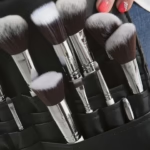


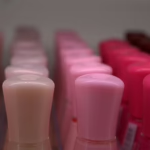





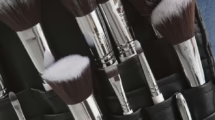
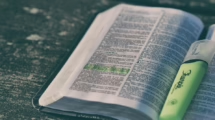


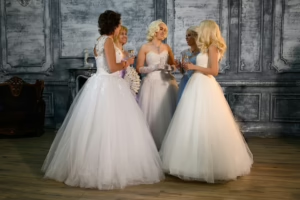
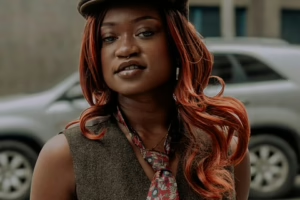

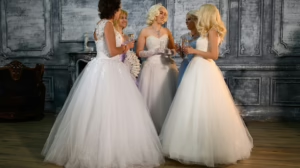
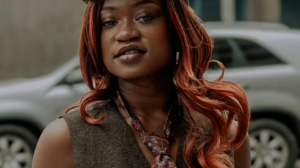
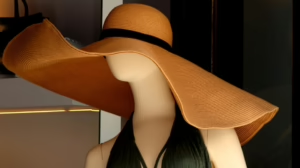




Add Comment